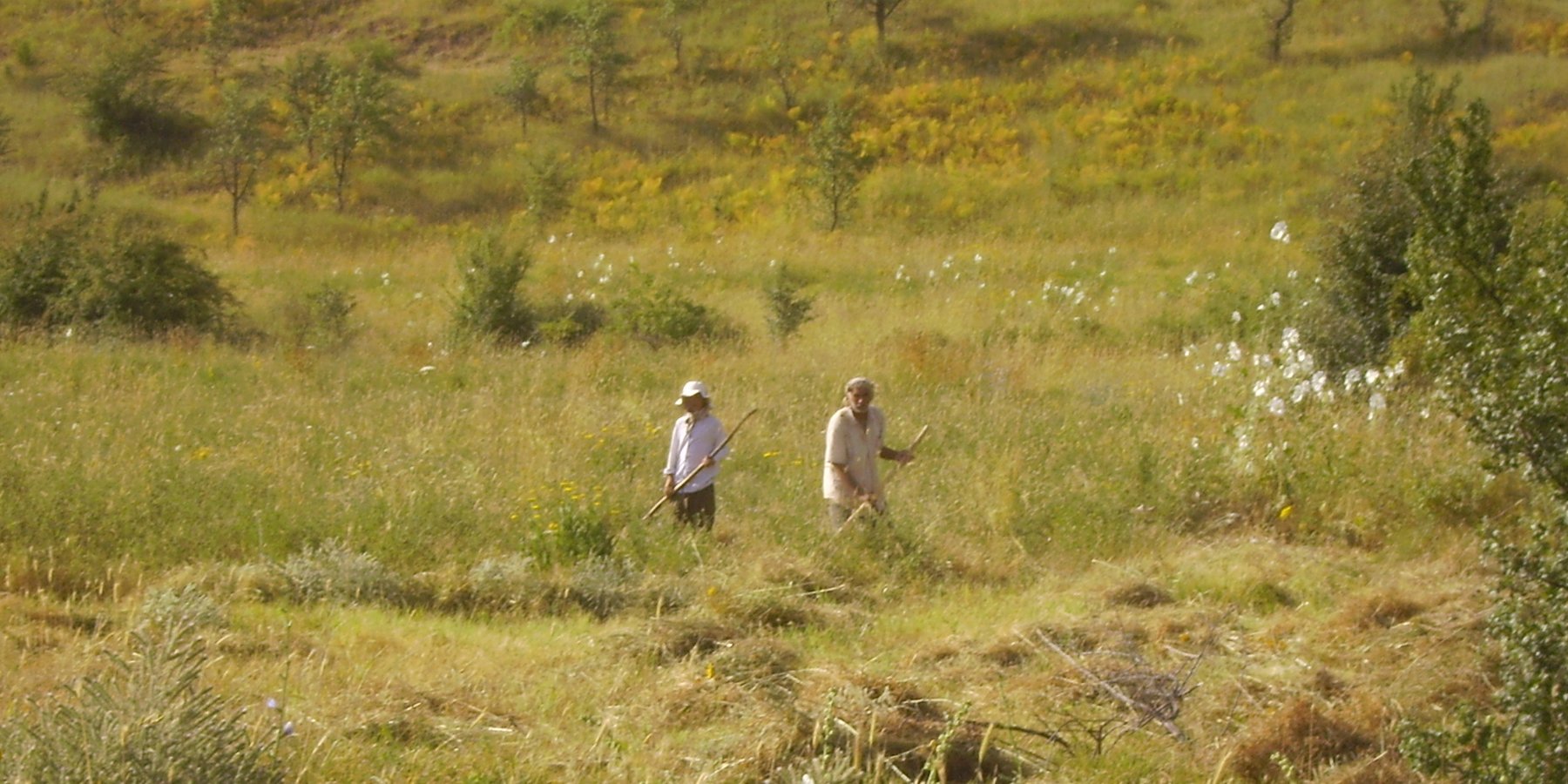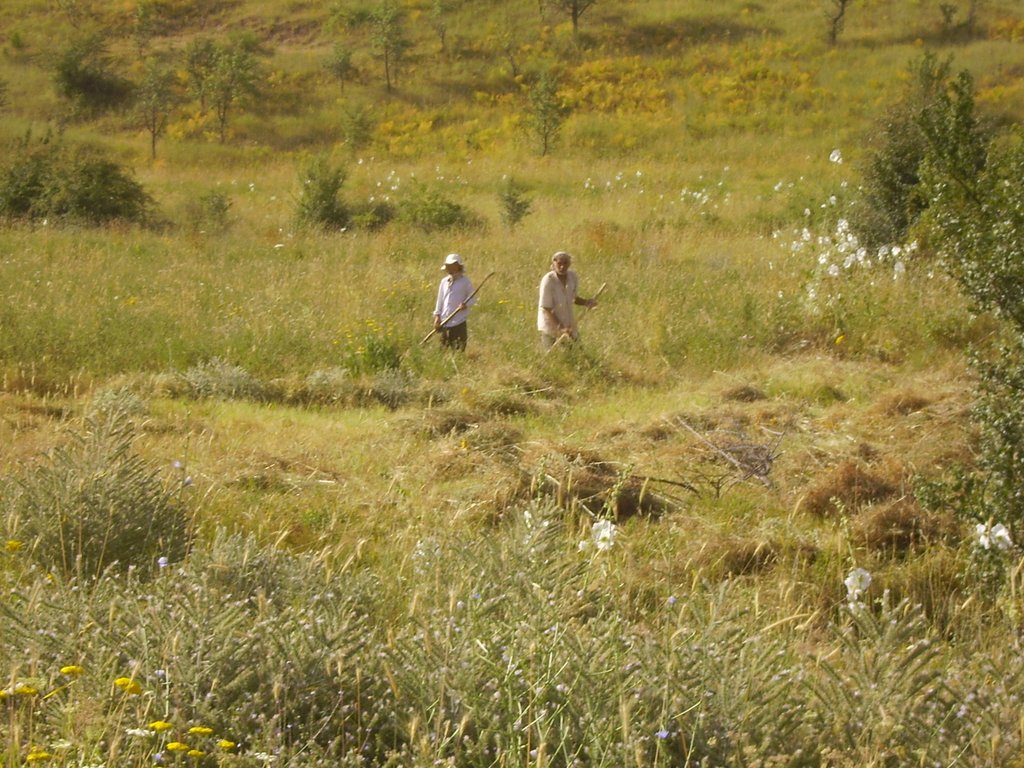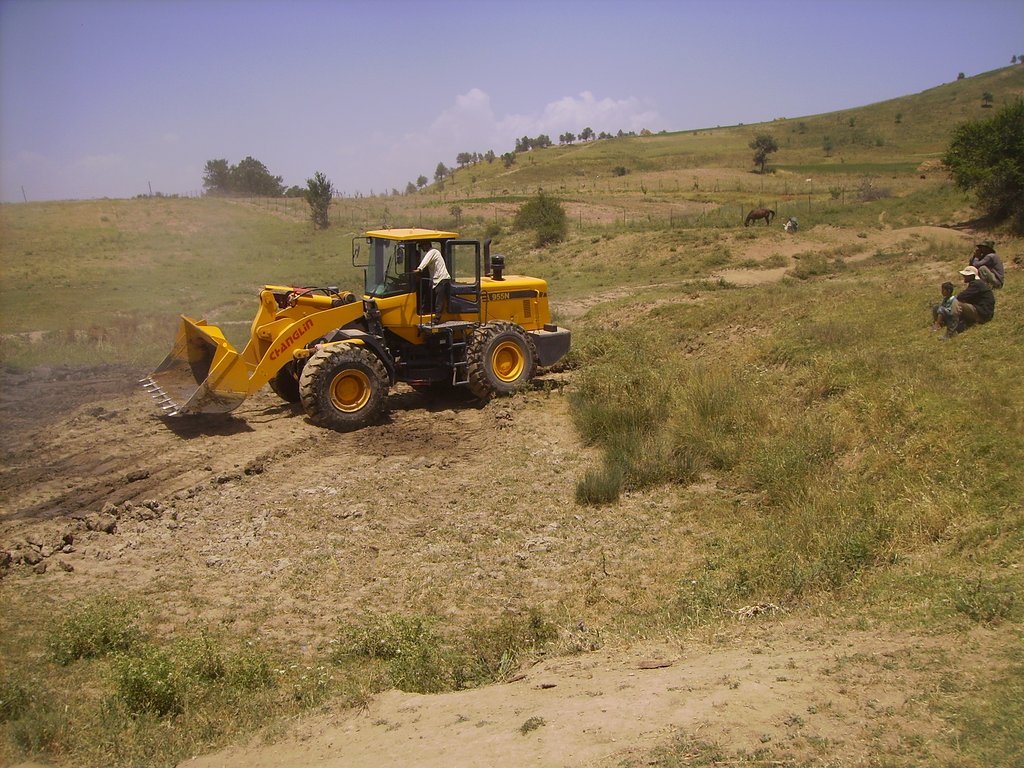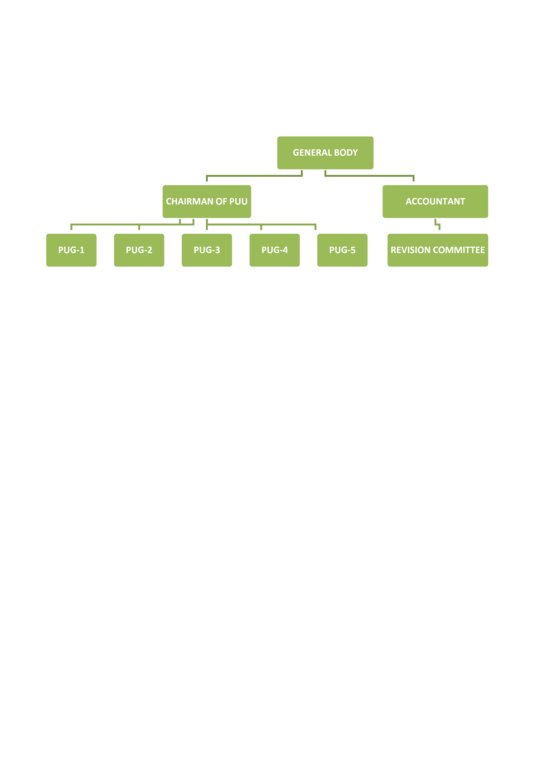Sustainable livestock and pasture management [Tadjikistan]
- Création :
- Mise à jour :
- Compilateur : Kamolidin Abdulloev
- Rédacteur : –
- Examinateurs : Farrukh Nazarmavloev, William Critchley, Rima Mekdaschi Studer
Pasture Users Unions
approaches_3713 - Tadjikistan
Voir les sections
Développer tout Réduire tout1. Informations générales
1.2 Coordonnées des personnes-ressources et des institutions impliquées dans l'évaluation et la documentation de l'Approche
Nom du projet qui a facilité la documentation/ l'évaluation de l'Approche (si pertinent)
Environmental Land Management and Rural Livelihood ProjectNom du ou des institutions qui ont facilité la documentation/ l'évaluation de l'Approche (si pertinent)
Committee for Environment Protection of Tajikistan (Committee for Environment Protection of Tajikistan) - Tadjikistan1.3 Conditions relatives à l'utilisation par WOCAT des données documentées
Quand les données ont-elles été compilées (sur le terrain)?
02/04/2018
Le compilateur et la(les) personne(s) ressource(s) acceptent les conditions relatives à l'utilisation par WOCAT des données documentées:
Oui
1.4 Références au(x) questionnaire(s) sur les Technologies de GDT
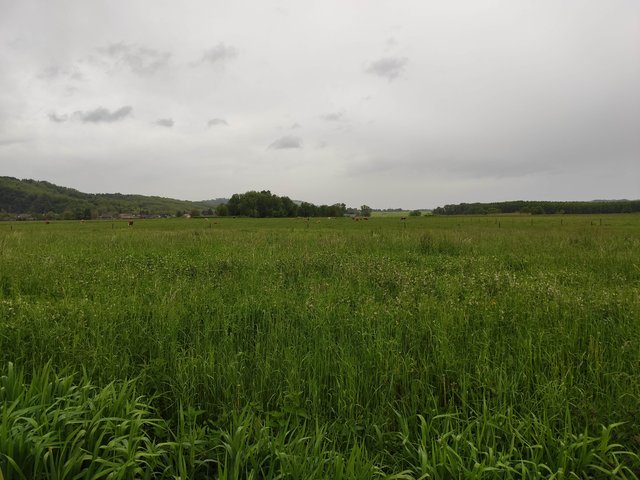
Meadows and pastures [Hongrie]
Permanent meadows or pastures are more effective in controlling land degradation than arable cropping. They are especially appropriate in hilly regions on sloping land where the risk of water erosion is high.
- Compilateur : Brigitta Szabó
2. Description de l'Approche de GDT
2.1 Courte description de l'Approche
Sustainable livestock and pasture management is implemented through creating Pasture Users Unions (PUU) which design and implement pasture and livestock management plans.
2.2 Description détaillée de l'Approche
Description détaillée de l'Approche:
The Government of Tajikistan is implementing a project, funded by the Pilot Program for Climate Resilience (PPCR) and the Global Environment Facility (GEF), with the objective of enabling rural people to build up their productive assets in ways that sustainably improve natural resource management, and build resilience to climate change in selected climate-vulnerable sites. Livestock are an integral part of the agriculture sector, although there has been a shift to more extensive livestock grazing from the intensive livestock farming system practiced before independence. Today, more than 90% of livestock are held in household farms, indicating the importance of livestock to rural livelihoods, and the system is based primarily on grazing, supplemented by limited cultivated fodder crops and minimal use of concentrates.
Pastures comprise about 35% of Tajikistan’s total land area and 80% of its agricultural land - however substantial degradation is taking place. Pasture degradation may be exacerbated by climate change, which is likely to increase variability in water availability and temperature, and may result in local droughts and floods. Properly managed pasture helps control water flows in ways which contribute to mitigating floods and droughts, maintaining soil conservation and fertility, and providing habitats for wild plants and animals. The aim of the activity is to introduce sustainable community-managed pasture/fodder-based livestock production systems in villages in the Faizobod district of jamoat Dustmurod Aliev, situated in the mid-hills of Tajikistan. Approximate membership of the Pasture Users Unions (PUU) is between 50 and 200 households per village depending on size, with between 6 and 10 villages per jamoat. Comprehensive pasture and fodder assessments and evaluation of the feed/fodder balances are carried out, followed by the development of Pasture and Livestock Management Plans (PLMP) for various interventions including; improvement of pasture productivity through rotational grazing, protecting areas for regeneration, pasture rehabilitation, improving access to remote pastures, and supplementary fodder production; animal health requirements and breed improvement measures; infrastructure to access and use remote pastures, such as spot road improvements, and stock watering points. By virtue of the fact that users will welcome this approach in their jamoats, they will be able to manage the broad issues of pasture degradation, animal health and fodder production. Above all it will help farmers to control the balance between livestock and fodder.
2.3 Photos de l'approche
Remarques générales concernant les photos:
Photos shows how the Pasture User Union maintains infrastructure in the pastures, giving them the opportunity to collect enough fodder for the winter time and keeping access open to the most distant pasture lands
2.4 Vidéos de l'Approche
2.5 Pays/ région/ lieux où l'Approche a été appliquée
Pays:
Tadjikistan
Région/ Etat/ Province:
Faizobod district
Autres spécifications du lieu :
Jamoat Dustmurod Aliev
Map
×2.6 Dates de début et de fin de l'Approche
Indiquez l'année de démarrage:
2017
Si l'année précise est inconnue, indiquez approximativement quand l'Approche a démarré:
il y a moins de 10 ans (récemment)
Commentaires:
The project created 8 PUUs (4 in 2015 and 4 in 2016), and facilitated them to prepare Pasture and Livestock Management Plans. Institutions finished the project financed activities but they still continue their work
2.7 Type d'Approche
- fondé sur un projet/ programme
2.8 Principaux objectifs de l'Approche
To help mitigate the effects of climate change on the rural population and slow pasture degradation processes through introducing and demonstrating sustainable pasture/fodder-based livestock production systems;
To support the development of a Pasture and Livestock Management Plan (PLMP) for Pasture User Unions (PUU), in a participatory, inclusive and gender sensitive way: to
- Serve as tool to organize the management of community managed pastures in such a way that it will
increase pasture yields in quantity and quality, without causing land degradation & erosion;
- Serve as a tool to improve livestock management, and;
- Bring the number of livestock in balance with the available fodder;
- Increase animal off-take through better yielding pastures, adoption of improved
feeding practices & improved animal management and through better animal health;
- Increase the income of the rural population from livestock keeping, and;
- Reduce downstream flood risk in mountain areas, due to improved land management.
2.9 Conditions favorisant ou entravant la mise en œuvre de la(des) Technologie(s) appliquée(s) sous l'Approche
normes et valeurs sociales/ culturelles/ religieuses
- favorise
The land users are livestock keepers thus all the approaches are welcome as it will directly affect them
- entrave
Pasture User Unions do not have their own certificated lands under their control
disponibilité/ accès aux ressources et services financiers
- favorise
As the Pasture Users Unions are equipped with the agriculture tractors and excavators, they process the lands and rehabilitate pasture roads and also bank stabilization works and from all of these activities earn money. The other sources is their membership fees that collect every month from the members.
cadre institutionnel
- favorise
A Pasture Law was passed on 19 March 2013 (Law No 951) that will enable the formation of Pasture User Unions for the joint use and management of pasture resources.
collaboration/ coordination des acteurs
- favorise
The Pasture User Unions collaborate with the local district hukumat and all its departments, non-governmental and donor organisations in the process of implementation of Pasture and Livestock Management Plans. PUU also have very good cooperation with the land users and livestock keepers.
cadre juridique (régime foncier, droits d'utilisation des terres et de l'eau)
- favorise
Pasture User Union of "Sorkho" is established in Faizobod district, registered at jamoat level, and has their charter, stamp and other office equipment and an office.
cadre politique
- favorise
Pasture laws are passed that supports pasture managament activities.
gouvernance foncière (prise de décisions, mise en œuvre et application des décisions)
- entrave
The main issue that is PUUs haven't ownership of the pasture land.
connaissances sur la GDT, accès aux supports techniques
- favorise
The project also includes training and technical support of the PUUs on budgeting, SLM approaches, and administration
marchés (pour acheter les intrants, vendre les produits) et prix
- favorise
Materials are broadly available at an affordable price
charge de travail, disponibilité de la main-d'œuvre
- favorise
Local people understand the importance of the activity and are ready to contribute cash and power for its implementation.
3. Participation et rôles des parties prenantes impliquées dans l'Approche
3.1 Parties prenantes impliquées dans l'Approche et rôles
- organisations communautaires
The head of each PUU has been involved in the process of preparation
The Pasture User Union of "Sorkho" that was established by the project ELMARL. Support with the photos and information
- Spécialistes de la GDT/ conseillers agricoles
- ONG
Mountain Societies Development Support Programme (MSDSP)
They was partner organisation that did facilitation during the establishment and implementing Pasture User Unions plans
3.2 Participation des exploitants locaux des terres/ communautés locales aux différentes phases de l'Approche
| Participation des exploitants locaux des terres/ communautés locales | Spécifiez qui était impliqué et décrivez les activités | |
|---|---|---|
| initiation/ motivation | interactive | Awareness raising and introductory meetings, training, seminars and other with the local livestock keepers |
| planification | interactive | Local land users participated in the process of the preparation of plan (PLMP) |
| mise en œuvre | auto-mobilisation | Local land users and livestock keepers contributing in cash or as labor during the implementation of their plan |
| suivi/ évaluation | auto-mobilisation | Assessments, field observations, monitoring and controlling of the process of implementation |
| auto-mobilisation | Fully involved during the operation and maintenance of the pasture infrastructures, and research |
3.3 Diagramme/ organigramme (si disponible)
3.4 Prises de décision pour la sélection de la Technologie/ des Technologies
Indiquez qui a décidé de la sélection de la Technologie/ des Technologies à mettre en œuvre:
- principalement les spécialistes de la GDT, après consultation des exploitants des terres
Expliquez:
The approach has been developed, tested and adapted by the consultants and specialists of the project with the involvement of pasture users according to the Pasture Law that was passed on 19 March 2013 (Law No 951)
Spécifiez sur quelle base ont été prises les décisions:
- l'évaluation de connaissances bien documentées en matière de GDT (prises de décision fondées sur des preuves tangibles)?
- les résultats de recherches?
4. Soutien technique, renforcement des capacités et gestion des connaissances
4.1 Renforcement des capacités/ formation
Une formation a-t-elle été dispensée aux exploitants des terres/ autres parties prenantes?
Oui
Spécifiez qui a été formé:
- exploitants des terres
- personnels/ conseillers de terrain
Formats de la formation:
- sur le tas
- entre agriculteurs (d'exploitants à exploitants)
- zones de démonstration
Thèmes abordés:
ToT on environmental management of pasture lands, accounting, planning
4.2 Service de conseils
Les exploitants des terres ont-ils accès à un service de conseils?
Non
4.3 Renforcement des institutions (développement organisationnel)
Des institutions ont elles été mises en place ou renforcées par le biais de l'Approche?
- oui, beaucoup
Spécifiez à quel(s) niveau(x), ces institutions ont été renforcées ou mises en place:
- local
Décrivez l'institution, ses rôles et responsabilités, ses membres, etc.
Pasture Users Unions
Local hukumat departments:
Ministry of Agriculture, Committee for Environmental Protection and Committee of Women Affairs
Précisez le type de soutien:
- renforcement des capacités/ formation
- équipement
Donnez plus de détails:
The representatives of mentioned departments participated in the trainings, conferences and meetings during project implementation and helps participants with the recommendations and guides
4.4 Suivi et évaluation
Le suivi et l'évaluation font ils partie de l'Approche? :
Oui
Commentaires:
The main tasks of monitoring relative to the livestock and pasture improvement activities; (a) Activities required to improve livestock
management (animal health, housing, feeding, breeding), (b) activities required to improve pasture
production (rotational grazing, protecting pastures, pasture rehabilitation through spot planting with
legumes, improving access to remote pastures, supplementary fodder production, set stocking
rates), (c) investment needs1 & sources of funding, (d)an implementation plan showing
responsibilities/targets/indicators
Si oui, ce document est-il destiné à être utilisé pour le suivi et l'évaluation?
Oui
Commentaires:
As the approach supports project and land users to define
(a) measures to improve pasture productivity and sustainability, such as rotational grazing, protecting areas for regeneration, pasture rehabilitation, improving access to remote pastures, and needs for supplementary fodder production;
(b) grazing utilization levels;
(c) animal health requirements and breed improvement measures;
(d) investment needs; and (e) implementation responsibilities, targets and indicators in their plans
4.5 Recherche
La recherche a-t-elle fait partie intégrante de l’Approche?
Non
5. Financement et soutien matériel externe
5.1 Budget annuel de la composante GDT de l'Approche
Indiquez le budget annuel de la composante GDT de l'Approche en $ US:
100000,00
Commentez (par ex. principales sources de financement/ principaux bailleurs de fonds):
The project funded by the Pilot Program for Climate Resilience (PPCR) and the Global Environment Facility (GEF) with the objective of enabling rural people to build their productive assets in ways that sustainably improve natural resource management and build resilience to climate change in selected climate vulnerable sites
5.2 Soutiens financiers/ matériels fournis aux exploitants des terres
Les exploitants des terres ont-ils reçu un soutien financier/ matériel pour la mise en œuvre de la Technologie/ des Technologies?
Oui
Si oui, spécifiez le(s) type(s) de soutien, les conditions et les fournisseurs:
The grant amount would average US$ 100,000 for each of the 8 PUUs with the specific amount depending on pasture area and existing number of livestock units (to be finalized during implementation)
5.3 Subventions pour des intrants spécifiques (incluant la main d'œuvre)
- main d'œuvre
| Dans quelle mesure | Spécifiez les subventions |
|---|---|
| Beneficiaries would contribute at least an additional 25% match of the grant amount (partly in cash and/or in kind as labour or equipment costs). |
Si la main d'œuvre fournie par les exploitants des terres était un intrant substantiel, elle était:
- volontaire
Commentaires:
Investments could include: a) infrastructure to access and use remote pastures, such as spot road improvements, stock watering points, shelters and stock-pens, and milk cooling equipment; b) machinery to produce and harvest fodder; c) costs of rehabilitation measures for degraded areas such as fencing, weed and shrub control, and re-seeding; d) inputs for supplementary fodder production such as seeds; e) vaccinations and parasite control; and f) artificial insemination. Funds could also be used for additional training above that provided by the contracted NGO and for provision of office equipment and furnishings for PUUs.
5.4 Crédits
Des crédits ont-ils été alloués à travers l'Approche pour les activités de GDT?
Non
5.5 Autres incitations ou instruments
D'autres incitations ou instruments ont-ils été utilisés pour promouvoir la mise en œuvre des Technologies de GDT?
Oui
Si oui, spécifiez:
The Pasture User Unions have equipped with the high volume machines to improve the pasture roads and riverbanks
6. Analyses d'impact et conclusions
6.1 Impacts de l'Approche
Est-ce que l'Approche a autonomisé les exploitants locaux des terres, amélioré la participation des parties prenantes?
- Non
- Oui, un peu
- Oui, modérément
- Oui, beaucoup
The ELMARL project used this approach in 4 pilot districts and established 8 PUUs that improve and rehabilitated 12600 hectares of pasture lands. Results showed that PUUs have made significant progress in implementing their activities. As a result of the use of machinery, more than 120 km of roads for livestock and hazardous areas were repaired and rehabilitated, and conditions of pastures improved over an area of 6,750 hectares. As a result of construction of watering points for livestock, PUUs were given the opportunity to graze livestock in summer pastures for more than one month and conditions for 1050 hectares of pastures were improved. As a result of the use of bridges for livestock, the PUU members obtained an access to 470 hectares of pastureland, construction of kashars provided the opportunity for pasture users to use 3900 ha of pasture lands, 1.86 ha of area was rehabilitated by establishing demonstration plots, the area of 75 hectares of land was processed and improved through the use of small agricultural tractors, 250 hectares of pastureland have been improved through sowing grasses as fodder, 100 hectares of pasture lands have been improved through the installation of irrigation pump.
Est-ce que l'Approche a aidé les exploitants des terres à mettre en œuvre et entretenir les Technologies de GDT?
- Non
- Oui, un peu
- Oui, modérément
- Oui, beaucoup
Of course, establishing PUUs and designing Pasture and Livestock Management Plans that directly adopted to the SLM will help land users to manage their lands. Some of examples from the PUUs activities contribute to the SLM; construction of 'kashars' (Animal and herder shelters) Implementing these activities has made great profit to PUUs. Cattle breeders were able to extend period for cattle grazing in summer pastures and reduce the burden of livestock in pastures around the village; Improvement of cattle breeding leads to increased productivity and reduce degradation; Improvement of the roads condition – situation of roads for livestock is being improved due to the fact that PUUs in Faizobod district have purchased technique, which guarantees the safe keeping of livestock and also lands that are around the road; sowing perennial grasses was the only activity, which occupied 250 hectares of pasturelands for fodder, and not all PUUs pay attention to these problems. The activity can provide livestock with fodder and prevent lands from erosion as well.
Est-ce que l'Approche a amélioré la coordination et la mise en œuvre de la GDT selon un bon rapport coût-efficacité?
- Non
- Oui, un peu
- Oui, modérément
- Oui, beaucoup
Using of machinery is the one of activities that was supported by PUUs to rehabilitate roads for livestock and hazardous areas. If PUUs rent this machinery it will be too expensive and organisations does not have such kind opportunity, but machinery helps them to repair their lands in regularly base.
Est-ce que l'Approche a mobilisé/ amélioré l'accès aux ressources financières pour la mise en œuvre de la GDT?
- Non
- Oui, un peu
- Oui, modérément
- Oui, beaucoup
The PUUs equiped with the needed machinery and office where they could organise meetings, so they can construct, rehabilitate and generally support their members(livestock keepers, land users). Presently the PUUs in a very good relationship with their members and collect membership fees regularly, also they have another source of money from the mashinary services. PUU regularly maitaining systems.
Est-ce que l'Approche a amélioré les connaissances et les capacités des autres parties prenantes?
- Non
- Oui, un peu
- Oui, modérément
- Oui, beaucoup
The PUUs are the member of the GIZ 'Pasture Management Networking Platform' and participated in the meetings regularly. The main task of the meetings is to exchange information and experience on SLM and pasture management projects among various implementing partners.
Est-ce que l'Approche a amélioré l'égalité entre hommes et femmes et autonomisé les femmes et les filles?
- Non
- Oui, un peu
- Oui, modérément
- Oui, beaucoup
PUUs appraised for gender and their inclusion of women and the poor, and possible actions identified to address inequities. Where inequitable arrangements are found that exclude or marginalize vulnerable groups, opportunities will be sought where possible to address these inequities, e.g., targeting a proportion of certain types of production investments to groups of vulnerable households (wool processing, poultry development). Gender and social issues to be addressed during capacity building will mainly relate to an identified need to increase awareness and strengthen capacity of peer-to-peer learning and community mobilization, particularly focusing on increasing the level of participation of nondirect beneficiaries and members of marginalized groups.
Est-ce que l'Approche a amélioré les questions foncières et des droits d'utilisation qui entravent la mise en œuvre des Technologies?
- Non
- Oui, un peu
- Oui, modérément
- Oui, beaucoup
The regulation of land allocation, lease and management is under the jurisdiction of the local level authorities together with the district representation of the Land Committee, but also needs to be approved by the provincial and central authorities. Most PUUs quoted that provision of land certificates for Dekhkan Farms on pastureland and PUUs have made attempts to acquire land use right on pastureland and some became successful.
6.2 Principale motivation des exploitants des terres pour mettre en œuvre la GDT
- réduire la dégradation des terres
Pasture degradation, due in part to overgrazing and poor stocking practices, is an
important threat and all above mentioned activities contributed to the land degradation
- réduire les risques de catastrophe
Regular road and bridge rehabilitation via machinery and controlling grazing pasturelands contribute to the reduction of disasters
- conscience environnementale
The environmental impact of the approach is largely positive with its planned activities
- améliorer les connaissances et compétences en GDT
The PUUs are members of the GIZ 'Pasture Management Networking Platform' and participated in the meetings regularly. The main task of the meetings is to exchange information and experience on SLM and pasture management projects among various implementing partners.
6.3 Durabilité des activités de l'Approche
Les exploitants des terres peuvent-ils poursuivre ce qui a été mis en œuvre par le biais de l'Approche (sans soutien extérieur)?
- oui
Si oui, décrivez de quelle manière:
The approach is a sustainable mechanism itself as it has almost all needed resources and capacity to continue their activity. As an example PUU has found a new sources of income today one of the PUUs, “Sorkho” participated in the district competition to implement the program “Prevention of Land Refinement by using biosynthic methods” conducted by the MSDSP Aga Khan Foundation in Surkhdara area of D. Aliev jamoat in Fayzobod district and succeeded in that so in further that will be a lesson to be learnt by other PUUs. The PUU has now established cooperation with this organization on the basis of mutual agreement and is trying to improve the state of pastures at the jamoat level, and nowadays its work is already in progress.
6.4 Points forts/ avantages de l'Approche
| Points forts/ avantages/ possibilités du point de vue de l'exploitant des terres |
|---|
|
Office and all needed equipments for the operation of PUU Membership fees |
|
Machinery for land and infrastructure Income from the machinery |
| Points forts/ avantages/ possibilités du point de vue du compilateur ou d'une autre personne ressource clé |
|---|
|
Confidence between the PUU and its members Availability of Pasture and Livestock Management Strategy (includes planned activities for the 3 to 5 years) Availability of needed pasture and livestock Infrastructure; veterinary infrastructure, machinery to improve pasture roads and bridges, livestock watering points. |
| Needed knowledge and capacity to improve pasture production (rotational grazing, protecting pastures, pasture rehabilitation through spot planting with legumes, improving access to remote pastures, supplementary fodder production, set stocking rates |
|
Mechanism of controling to improve livestock management (animal health, housing, feeding, breeding) Livestock and pasture management; feeding practices, housing, breeding, disease control,marketing of products, usage of the different type of pastures |
6.5 Faiblesses/ inconvénients de l'Approche et moyens de les surmonter
| Faiblesses/ inconvénients/ risques du point de vue de l’exploitant des terres | Comment peuvent-ils être surmontés? |
|---|---|
| Sufficient source of funding |
| Faiblesses/ inconvénients/ risques du point de vue du compilateur ou d'une autre personne ressource clé | Comment peuvent-ils être surmontés? |
|---|---|
| As it is new the approach needs more support and collaboration on behalf of other government and nongovernment organisation |
Government needs to support them to be more capable Non governmental organisation need to design project to train them |
| PUUs does not have their own certificated lands in their balance |
7. Références et liens
7.1 Méthodes/ sources d'information
- visites de terrain, enquêtes sur le terrain
15
- interviews/entretiens avec les exploitants des terres
20
- compilation à partir de rapports et d'autres documents existants
7.2 Références des publications disponibles
Titre, auteur, année, ISBN:
ELMARL Project
Disponible à partir d'où? Coût?
Faizobod district, PUU "Sorkho"
7.3 Liens vers les informations pertinentes disponibles en ligne
Titre/ description:
ELMARL Annual Report 2017
Liens et modules
Développer tout Réduire toutLiens

Meadows and pastures [Hongrie]
Permanent meadows or pastures are more effective in controlling land degradation than arable cropping. They are especially appropriate in hilly regions on sloping land where the risk of water erosion is high.
- Compilateur : Brigitta Szabó
Modules
Aucun module trouvé


